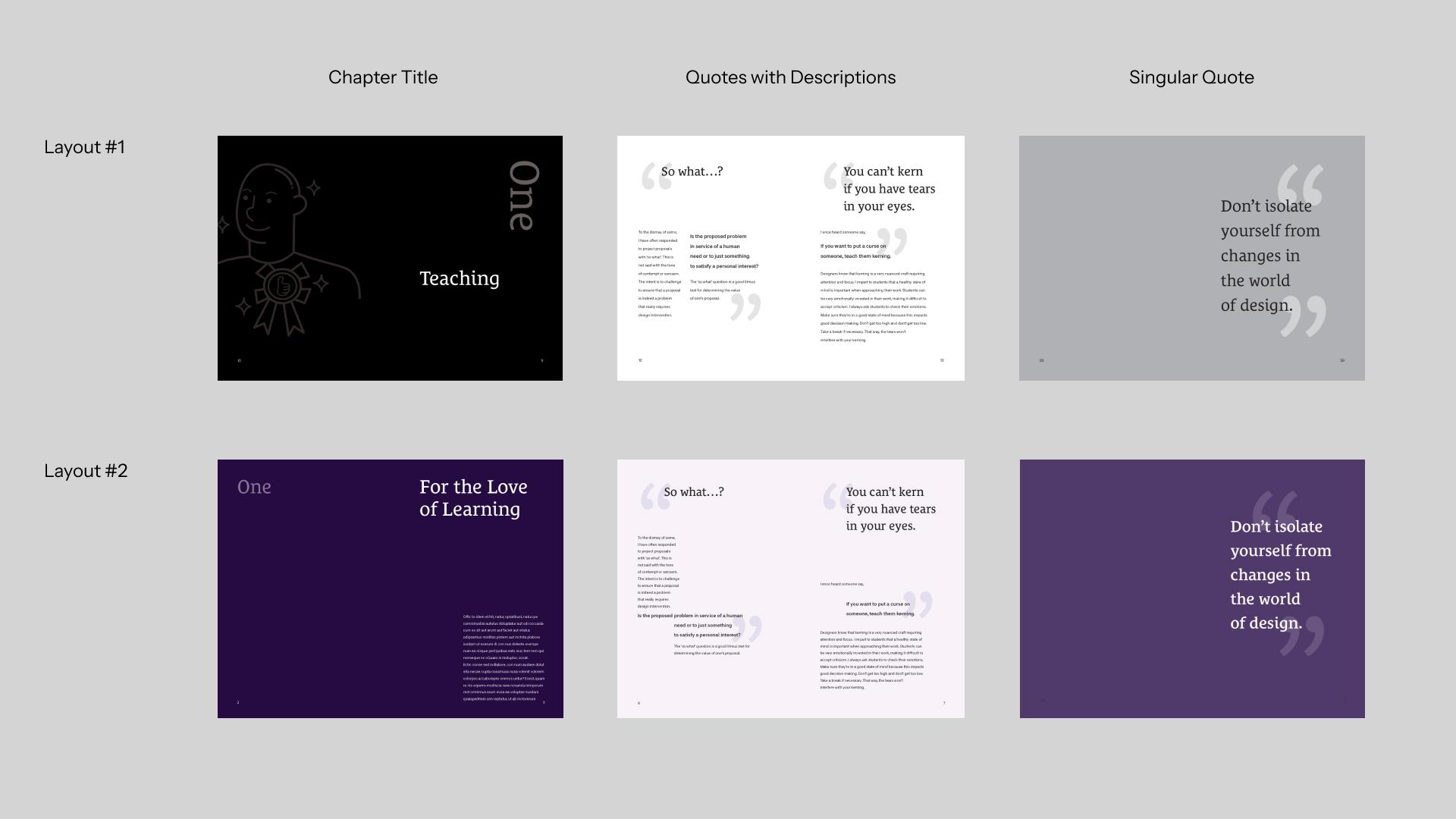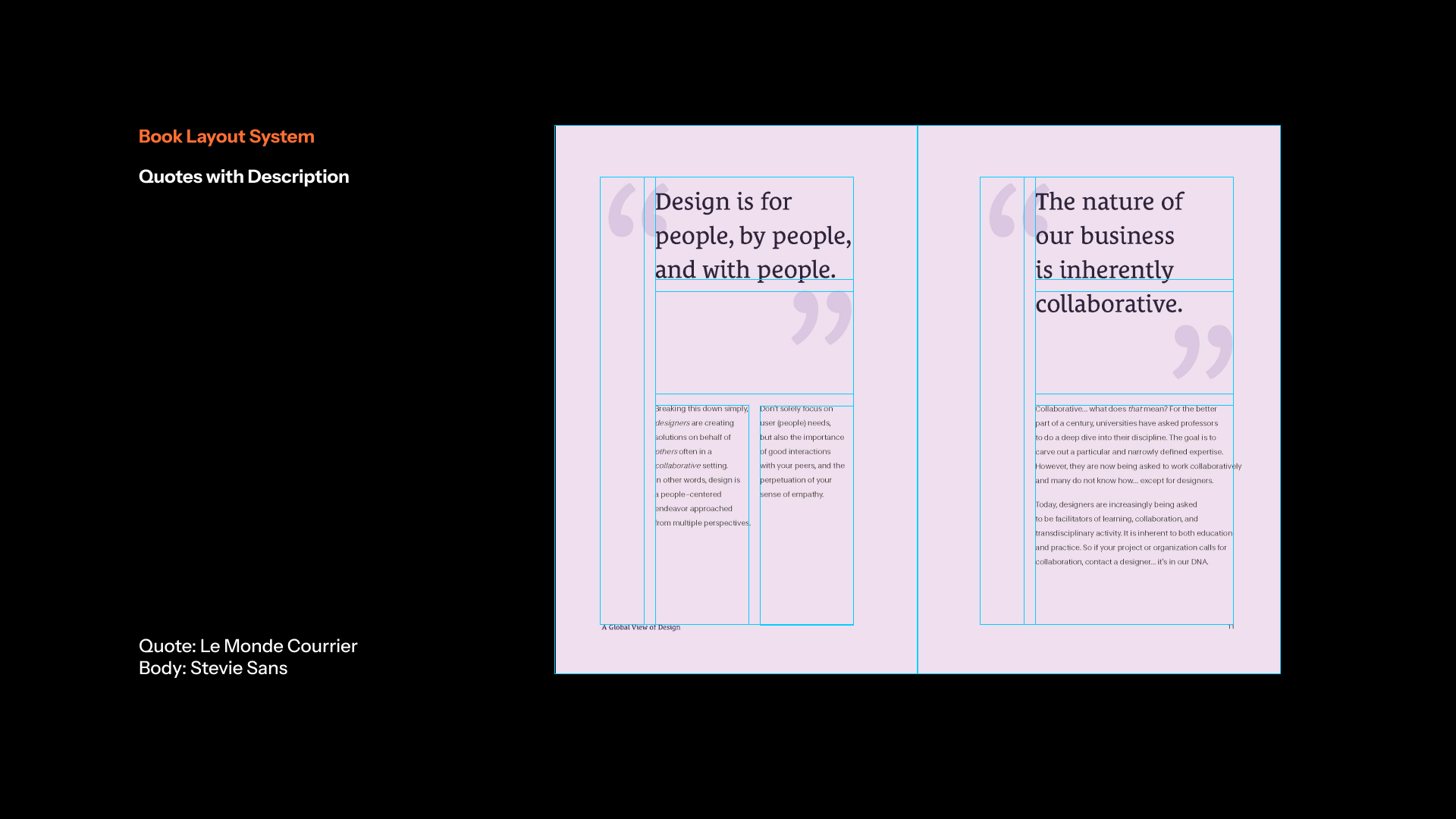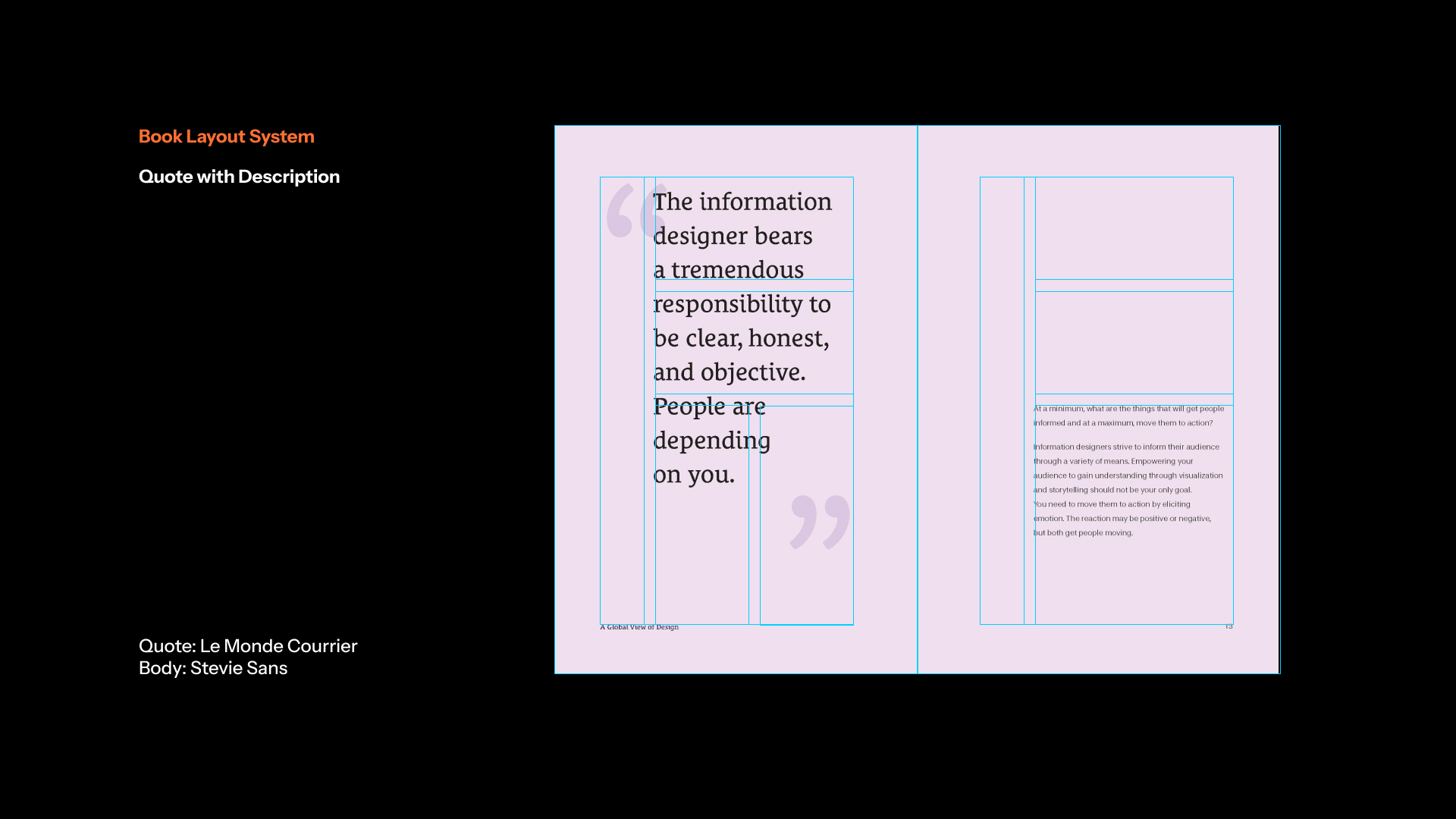Stories, Quips, & Quotes
Independent Book Publication
(Amazon, Kindle)

Book Design
Communication Design Hub, NUS, 2023–2024
I was delighted to be the designer of R. Brian Stone’s second Design book: Stories, Quips and Quotes.
Book publication, particularly in the self-publishing route, was an experience where I learned alot about managing production beyond design. I lead the creative direction and creation of the content layout system design.
This book was recently published on early October, 2024. Support the book here.
Book publication, particularly in the self-publishing route, was an experience where I learned alot about managing production beyond design. I lead the creative direction and creation of the content layout system design.
This book was recently published on early October, 2024. Support the book here.
Ideation Process
The content of the book was text heavy, mainly with quotes and accompanying descriptions.
The reading experience of the book was envisioned to be similar to “finding nuggets of gold”, which refers to digestible valuable design advice and strikes that “Oh!” reaction of understanding from the reader.
Case studies were initially done on advice books that were both informational and had visual character, to garner inspiration and kick off ideation.
The reading experience of the book was envisioned to be similar to “finding nuggets of gold”, which refers to digestible valuable design advice and strikes that “Oh!” reaction of understanding from the reader.
Case studies were initially done on advice books that were both informational and had visual character, to garner inspiration and kick off ideation.

Another challenge was setting up a layout system for the quotes.
There were two different types of quotes:
First, a singular quote, and second, a quote with a description. Variations of how these could be expressed were explored, such as highlighting certain words and reading orientation of the pages.
Due to the text heavy content, the reading flow of the book also had to be consistent yet rhythmic,
with occasional changes in visual design to keep the engagement level of the reader. Hence, the design strategy was to keep at least 3 to 4 spreads consistent, then apply a variation of the visual layout.
There were two different types of quotes:
First, a singular quote, and second, a quote with a description. Variations of how these could be expressed were explored, such as highlighting certain words and reading orientation of the pages.
Due to the text heavy content, the reading flow of the book also had to be consistent yet rhythmic,
with occasional changes in visual design to keep the engagement level of the reader. Hence, the design strategy was to keep at least 3 to 4 spreads consistent, then apply a variation of the visual layout.
Layout Exploration
Illustrations were considered at the start to accompany the quotes and set a quirky tone.
These layouts were sent to some readers to gauge feedback. Some were students that the author had taught before, and others were his former colleagues. Most of them replied with “I can hear his voice when reading!”
These layouts were sent to some readers to gauge feedback. Some were students that the author had taught before, and others were his former colleagues. Most of them replied with “I can hear his voice when reading!”

Interestingly, one of the replies stood out to me. “I can hear him, but what if I don’t know the author? What kind of tone should I be imagining in my head?”
With this, I decided to make use of typefaces to visually convey the affable voice of the author, and explore how I can apply the design strategy typographically.
With this, I decided to make use of typefaces to visually convey the affable voice of the author, and explore how I can apply the design strategy typographically.



Final Concept






